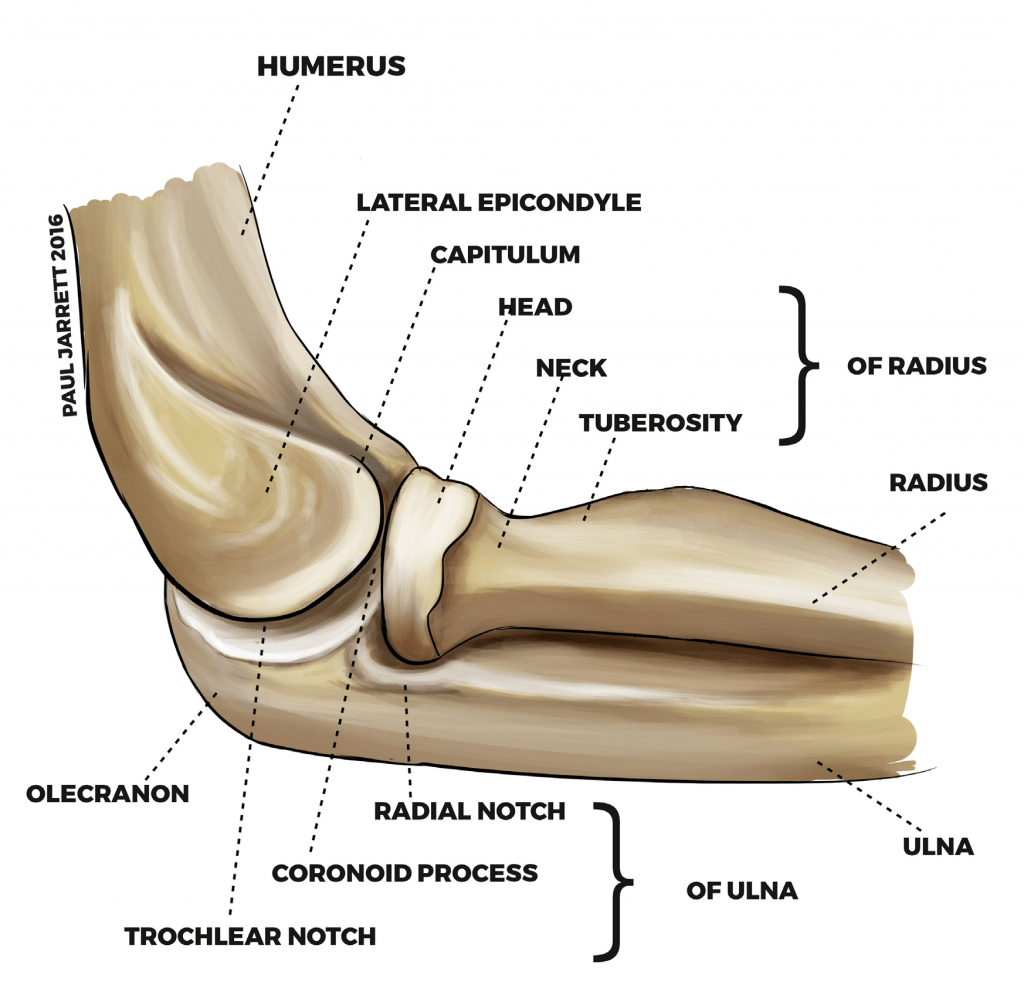
Your Elbows
The elbow consists of a joint between the arm bone, called the humerus and two forearm bones. The forearm bones are called the radius, which is on the thumb side, and the other is the ulna, which is on the little-finger side of the forearm.
The prominent part of the ulna, at the tip of the elbow, is called the olecranon. The elbow can bend (flex) and straighten (extend), but the joint between the top of the radius and the ulna called the proximal radioulnar joint is also involved in forearm rotation. There are supporting structures around the elbow consisting of the capsule, which is like a thin ligament around the elbow and larger individual ligaments.
The elbow is moved by muscles that cross the joint, many of which are attached via their tendons close to the elbow, such as the biceps and triceps tendons. There are also muscles controlling wrist and finger motion, whose tendons attach into the bone around the elbow. Some attach into the prominent bony areas on the inner (medial) and outer (lateral) aspect of the humerus, just above the elbow (epicondyles).

There are muscles in your forearm responsible for bending back (extending) your wrist and straightening (extending) your fingers. These extensor muscles attach to a bump of bone on the outside of your elbow called the lateral epicondyle. The muscles that perform the opposite motions (flexion) are attached into the medial epicondyle which is on the inside of your elbow.
Some major nerves and blood vessels pass through the elbow. The ulnar nerve lies just behind the medial epicondyle, between the epicondyle and olecranon. The ulnar nerve is responsible for sensation to the little finger and little finger aspect of the ring finger, and the power of some of the muscles in the hand and forearm. The median nerve passes through the front of your elbow and is responsible for sensation in your thumb, index, middle and inner half of the ring finger, and for powering many of the muscles in your forearm which make some aspects of your wrist and fingers work.
The radial nerve spirals from the back of the arm via the outer side of the elbow into the forearm on the outer front, and gives power to some forearm muscles which straighten your wrist and fingers, as well as to an area of sensation on the back of your hand near your thumb base. The brachial artery is the main artery to the forearm and hand and passes through the front of the elbow near the median nerve.
Injury or compression of the above nerves and blood vessel can significantly, and often permanently, influence the function of your hand and forearm.
